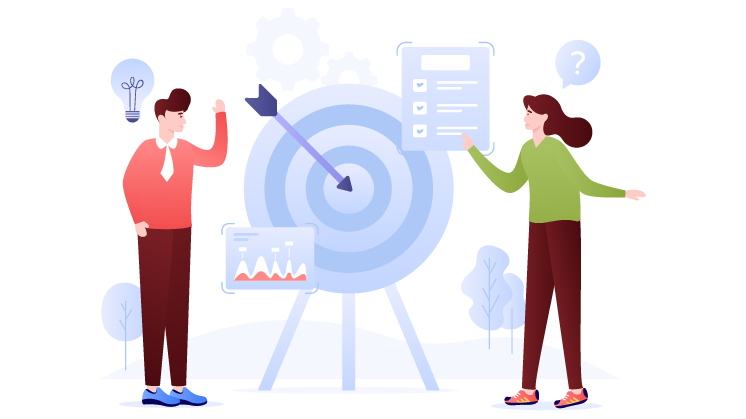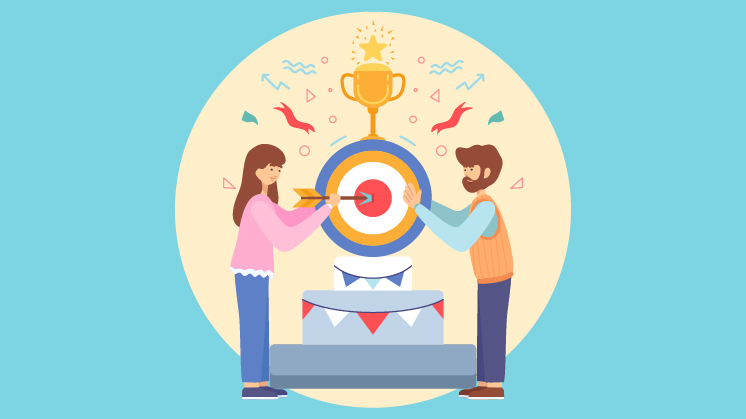
The core concept of gamification is the integration of gaming techniques in a non-gaming context. Due to its perceived benefits, such as the positive impact on employees through motivation and engagement, gamification at the workplace has become a successful phenomenon worldwide.
Let’s face it: gamification implementation is not a complex task at all. However, as it offers various benefits and is easy to execute in the workplace, businesses can commit mistakes without caution. Therefore, we have curated this blog post to highlight common gamification mistakes in marketing. It will help you avoid glaring errors while implementing gamification seamlessly.
Before exploring the mistakes, it’s important to be aware of a serious flaw that can occur in gamification implementation.
When you implement gamification, employees become too concentrated on winning the prizes and go astray from achieving corporate results. This can seriously hurt the bottom line.
Moreover, when gamification is removed from the office environment, employees’ engagement and motivation levels may hit an all-time low.
Therefore, it is crucial to weigh the pros and cons of gamification before implementing gamification tactics:
7 Gamification Mistakes in Marketing to Avoid
Here are the seven gamification errors in marketing you need to avoid for a successful reward campaign:
1- Unclear Gamification Objectives
Before implementing gamification, your corporate objectives must be clear. Define the clear outcomes you need to achieve and what you want from your employees in return.
Moreover, you need to mention what behaviors are expected from employees once you implement gamification techniques.
Your target audience is your staff. Therefore, you need to establish what behavioral changes you want to see and set your marketing and gamification objectives based on those changes.
2- Forcing or Enabling Fierce Competition
Employee competition breeds team morale, the primary factor you must keep intact in a work environment. It allows you to maintain progress in check. However, when internal competition becomes cutthroat, it backfires on the organization.
So, when you implement gamification, make sure you remove the element of resentment from your staff. One tip is to award team awards as well as individual rewards.
Set the KPIs of the team and relevant individuals and reward (in the form of ranks or badges) for hitting the KPI targets. This will keep the employees’ collaborative environment intact, and the teams will work in tandem to achieve the organization’s goals.
3- Making Gamification Over-complicated
While implementing gamification, you get the temptation to see every solution through the lens of badges, ranks, or similar dimensions. To sustain the interest level of your employees and keep things simple, you need to keep the temptation away.
To resist temptation, you must keep the gamification mechanics simple – no need to overcomplicate.
For example, if the reward can be a simple souvenir instead of some luxurious rank, keep it that way. Giving a rank or badge is unnecessary if the souvenir is doing the work.
4- Awarding Unequal Rewards
The process of rewarding points or rewards using gamification should be transparent to keep the staff engaged and motivated.
Onboard employees and have an open discussion regarding which type of reward they are interested in. You may assume employees want a pay hike, but they may surprise you with their answers.
If you want to implement an effective gamification structure, you need to find a way to excite and inspire your staff.
5- Not Taking Lessons From Peer Organizations
Before implementing gamification tactics, you need to thoroughly study your peer organizations. Studying your competitors will help you implement gamification seamlessly.
Pick an organization smaller than yours and note the behavioural changes achieved after they implemented gamification rewards. Pick their flaws and make a log to avoid those blunders.
6- Keeping Rewards Plain with No Element of Surprise
Predictable and unexciting rewards are a recipe for a disastrous gamification strategy. Boredom will kick in if your staff clearly knows what they will get every time they hit the mark. And that will account for a failed gamification initiative.
Experts of gamification mechanics say that reward programs should be random. The best example of unpredictable gamification is the ‘spin wheel.’
P.S. Prizes on the slices of the wheel will depend upon your organization’s budget.
7- No Alignment of Gamification and Organizational Goals
Though we staunchly advocate the advantages of gamification, it must be implemented in conjunction with an existing plan, objective, or initiative within your organization or team.
Failing to do so could result in the development of gamification challenges that are not in sync with the company’s actual objectives or broader strategy.
This could cause conflict among staff members, negatively impact enthusiasm, and ultimately lead to outcomes that are contrary to those originally thought.
Wrap Up
Gamification has the potential to be a powerful tool in marketing, but only if implemented correctly. By avoiding the 7 common gamification mistakes outlined above, you can create an engaging, effective program that drives actual results. Remember to keep it simple, transparent, and personalized, and engage with users to ensure ongoing success.





